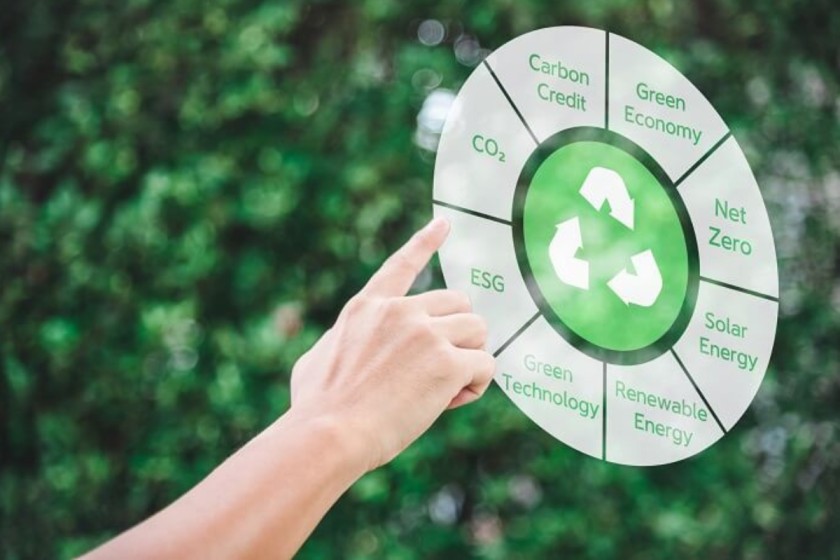- April 4, 2025
Currency devaluation threatens India’s green ambitions, demanding urgent action

India needs more than $10 trillion of capital in the next 25 to 45 years to reach net zero by 2070 or earlier, as per various agencies – translating to an average of $150 billion- to $200 billion annually. Despite efforts to mobilise domestic capital to fund its clean technology investment ambition, the country will continue to rely on foreign capital to bridge the financing gap.
But, the recent devaluation of the Rupee is puncturing India’s ambition to accelerate foreign capital flows for the clean energy sector after the new administration announced taking charge of the Oval Office. Historically, the Rupee depreciated on an average of 3% per annum except for a few aberration periods. However, with the aberration period hitting the Rupee in the last four months, the Rupee depreciated by 3.2% in the October 2024-January 2025 period, which makes clean energy companies seeking foreign capital nervous. While it isn’t a new problem for emerging markets, the challenge these markets face, including India, is that they need to attract a massive volume of foreign capital as quickly as possible to invest in low-carbon solutions. India is an attractive investment decision for foreign investors in the clean energy sector. As per the Department for Promotion of Industry and Internal Trade (DPIT), India mopped up $3.6 billion of foreign direct investment (FDI) for non-convention energy – approximately 8% of total FDI in FY2023-34 and more than 50% of last year. Besides, India also attracts foreign capital for refinancing, such as selling operational, clean energy assets to foreign investors and issuing green bonds to refinance bank loans, which unlock domestic capital, which is used to fund new clean energy projects. However, the size of foreign investment is still far from the country’s capital requirements for its green transition.
Devaluation makes clean project financing tricker
A significant portion of clean project financing is foreign capital and debt capital over a long period, thanks to the heavy capital intensity of these technologies. The reliance on borrowed capital always keeps the borrowers, clean energy companies, on the hook. Since Indian clean energy companies generate revenue in INR and pay interest and principal in foreign currency, which is technically called a ‘currency mismatch’, it is trickier for borrowers. Any devaluation of INR against foreign currencies increases the cost of a new project and makes it tougher to pay back borrowed capital.
Increasing the cost of the project
Given clean energy projects have a global supply chain and India still relies on importing net-zero technologies and materials, including solar panels, batteries, and critical minerals, the devaluation of the Rupee will make the cost of these technologies expensive for project developers. It also increases the interest and principal cost for the borrowers in their domestic currencies if unhedged. Besides, clean energy technology has a long asset life and capital cost locked in today stays locked in for 5 years or more for long-term investors. Any devaluation of currency increases capital costs, making projects commercially unviable and limiting incentives for developers to borrow from abroad.
Devaluation of any currency market also makes it risky for foreign investors, resulting in less flow of capital and subsequent increases in capital costs. While the former is not desirable for developing economies, the latter will discourage corporations from borrowing foreign capital. Both scenarios will jeopardise these economies’ goals to decarbonise.
Hedging solutions available but expensive and not suitable for clean energy projects
There are currency hedging solutions, such as currency swaps and options, available in financial markets, but these are expensive and indirectly increase the cost of capital. It is more problematic for smaller companies with lower credit ratings – many clean energy companies, not backed by large corporations, fall into this bracket. They are struggling to pay their debt in foreign currencies and raise new capital at a much higher rate. In addition, currency hedging solutions are not available for the long term – a maximum of seven years. But, clean energy projects need long-term financing to match their long-term lives.
Subsidising hedging cost
The subsidisation of currency swap costs is one of the solutions to incentivise clean energy companies to raise foreign capital. Government and public institutions such as Multilateral Development Banks (MDBs) and International Climate Finance Mechanisms (e.g. GCF) intervene in various ways to drive capital flows to clean energy projects. They can subsidise the swap premium, which is used to hedge currency; and effectively reduce the cost of capital for clean energy companies, which will enable them to raise foreign capital. Since large Development Finance Institutions (DFI) have the highest credit rating, swap costs will also be cheaper for them compared to small and medium-sized borrowers in India. They can bargain for a cheaper currency swap premium as well.
The recent devaluation of Rupee can puncture India’s 2030 climate target, which needs a massive volume of foreign capital. While the Reserve Bank of India is intervening to stabilise the currency market, it may take a longer time, but project developers seeking foreign capital need support from the Government and other public institutions to avoid this wild fluctuation of currency rate.
(Labanya Prakash Jena is a sustainable finance expert.)
Views are personal, and do not represent the stand of this publication.
